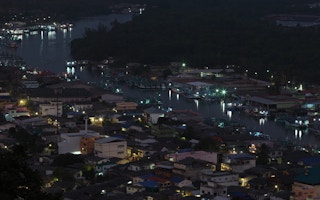Nearly 630 million people in Asia still do not have access to electricity even as the region’s demand for energy continues to grow at a rate where it will make up more than half of total global energy consumption by 2035, up from a one-third share today.
By then, Asia will also be responsible for almost half of all global carbon emissions, up from 35 per cent now, according to a report released by the Asian Development Bank (ADB).
The 2014 Annual Evaluation Review, launched in Manila on Thursday, noted that pressure on Asia’s governments to provide affordable energy to power the region’s growing economy and population, while also meeting pressing environmental objectives, will force it to make some difficult choices.
Some of these common trade-offs include pursuing long-term versus short term benefits, high growth versus inclusive growth, and “brown growth”, which is economic growth fuelled by carbon-intensive energy sources versus sustainable growth in order to meet the region’s economic and environmental aims.
The solution to resolving these seemingly conflicting objectives lies in renewable energy, said the report.
Vinod Thomas, director general of Independent Evaluation at ADB, noted that governments in Asia are under significant pressure to keep energy prices from rising, and renewable energy can seem like an unattractive option due to higher start-up costs.
“Fortunately, the cost of renewables is starting to fall, which is easing tensions between vital environmental objectives and those of an affordable and renewable energy supply,” said Thomas.
He added that the expansion of the market for new and renewable technologies was stimulating innovation and economies of scale, which contributed to bringing down costs.
“This emerging trend presents countries with an opportunity to step up policies and investments for switching to a low carbon path. This is the right time for governments to put in place policies to encourage investment in renewables,” he noted.
“
Fortunately, the cost of renewables is starting to fall, which is easing tensions between vital environmental objectives and those of an affordable and renewable energy supply.
Vinod Thomas, director general of independent evaluation, ADB
Renewable energy has significant potential as a low-cost solution to bring energy to those who do not yet have access to electricity, according to the ADB. In countries where electricity grids do not reach some isolated communities, small-scale renewable energy technologies can help extend the electricity grid.
This has been done successfully in Bangladesh, for example, where small photovoltaic systems have helped close to 3 million households achieve access to electricity in the past decade, said the ADB.
In addition to policy that supports investment in renewable energy, ADB also suggested eliminating fossil fuel subsidies.
It said that this one measure alone would cover a significant portion of the mitigation likely required to limit global warming to 2°C above pre-industrial levels, a figure that international experts agree is the upper limit of temperature increase that would not have catastrophic consequences for humans.
If Asia collectively shifts towards greater use of renewable resources, this could also open up opportunities for countries in the region to trade in electricity, said ADB.
Walter Kolma, team leader of the Evaluation Report, said that “there is substantial potential for this kind of trade in South Asia and the countries of the Mekong Basin for hydropower. In the case of wind power, an example would be Mongolia and the People’s Republic of China”.
The report also added that the uptake of renewable energy would lead to the development of smart grids to integrate clean energy into the electricity network.
Along with offering analysis on sustainable growth strategies in Asia, the report also evaluated the bank’s operational performance for 2013.
Findings showed that ADB’s energy loans had almost tripled in worth from US$5.8 billion in 2003-2007 to US$16.8 million in 2008-2012.
In some countries, the share of the bank’s financing for renewable energy and energy efficiency projects multiplied from 5 per cent in 2001-2008 to 27 per cent in 2009 – 2012.
The review “found no indication that the shift to a greener energy portfolio negatively impacts the financial sustainability of the projects or their success rate”, said ADB.

















